Abstract
Phage conversion of toxigenicity in Clostridium botulinum types C and D was accomplished by using nontoxigenic strains and phages purified from plaques. Although the morphology of the converting phages seemed to be the same, they were divided into three groups on the basis of their conversion spectrum. The first group consists of phages obtained from toxogenic strains C-Stockholm and C-468. The second group consists of phages from strains D-1873 and C-203. The third group consists of phages from strains D-South African and D-4947. These converting phages were also classified into the same three groups by a neutralization test with specific antiphage sera. Cross-neutralization, however, was observed between phages belonging to group 1 and group 2,by both the neutralization test of converting ability and by a plaque experiment in which the surviving rates of phages were calculated after treatment with each antiphage serum. The antigenic differences among these converting phages should probably comprise one of the reasons for the existence of the specific infection spectrum in C. botulinum types C and D.
Full text
PDF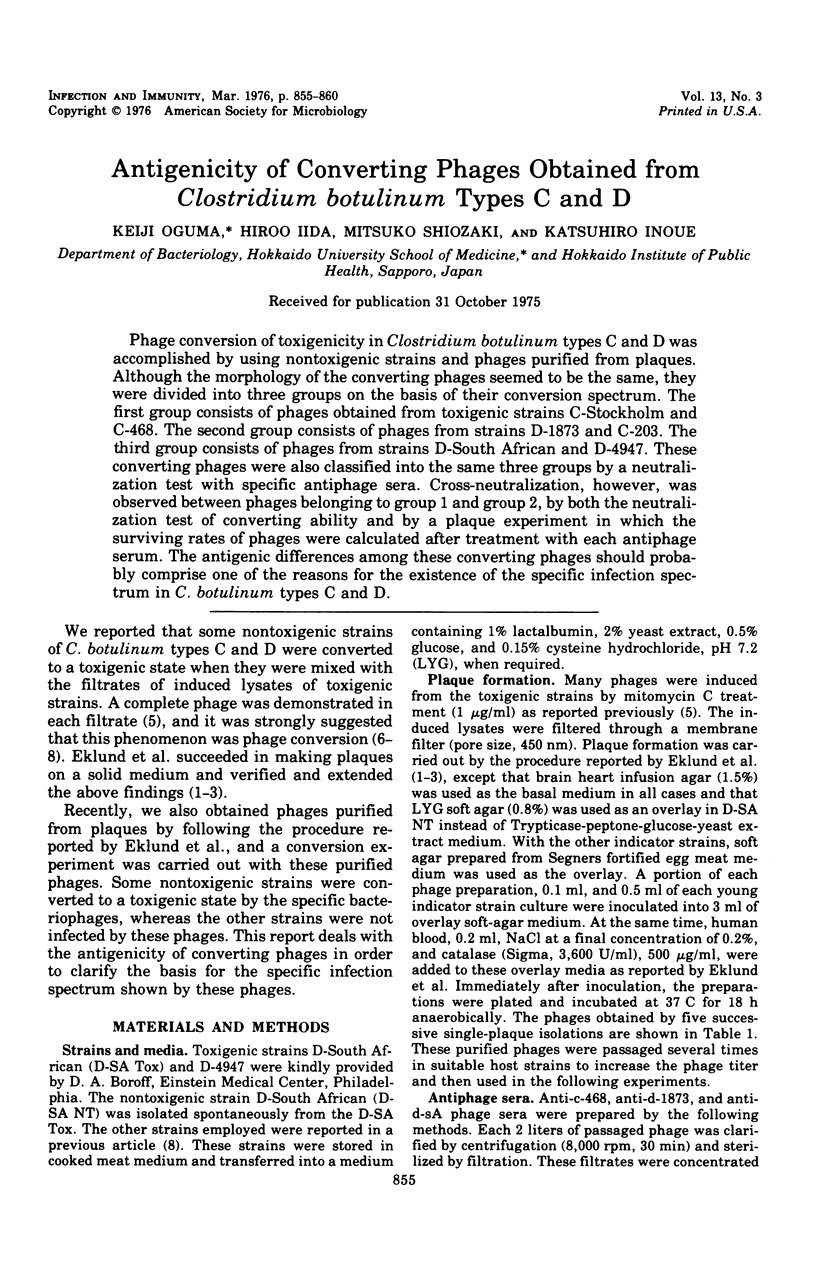
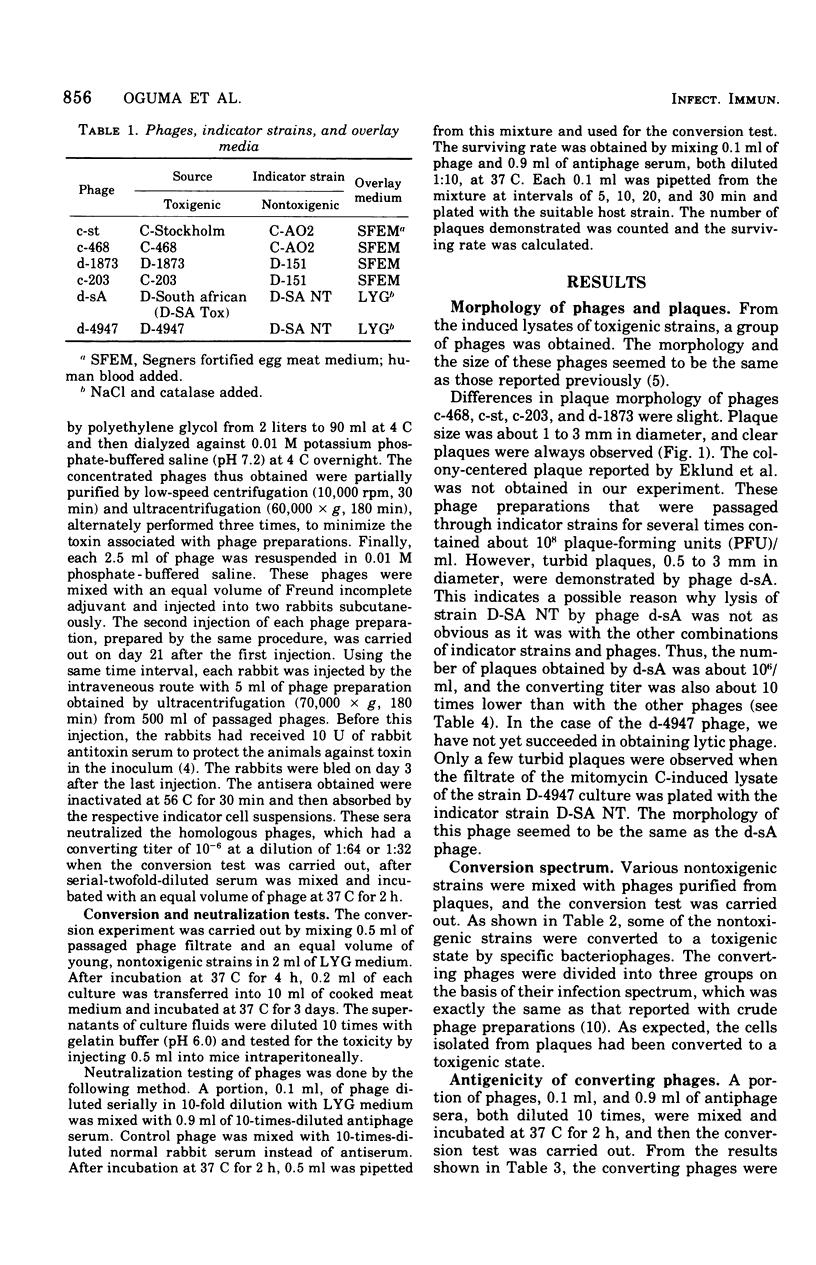
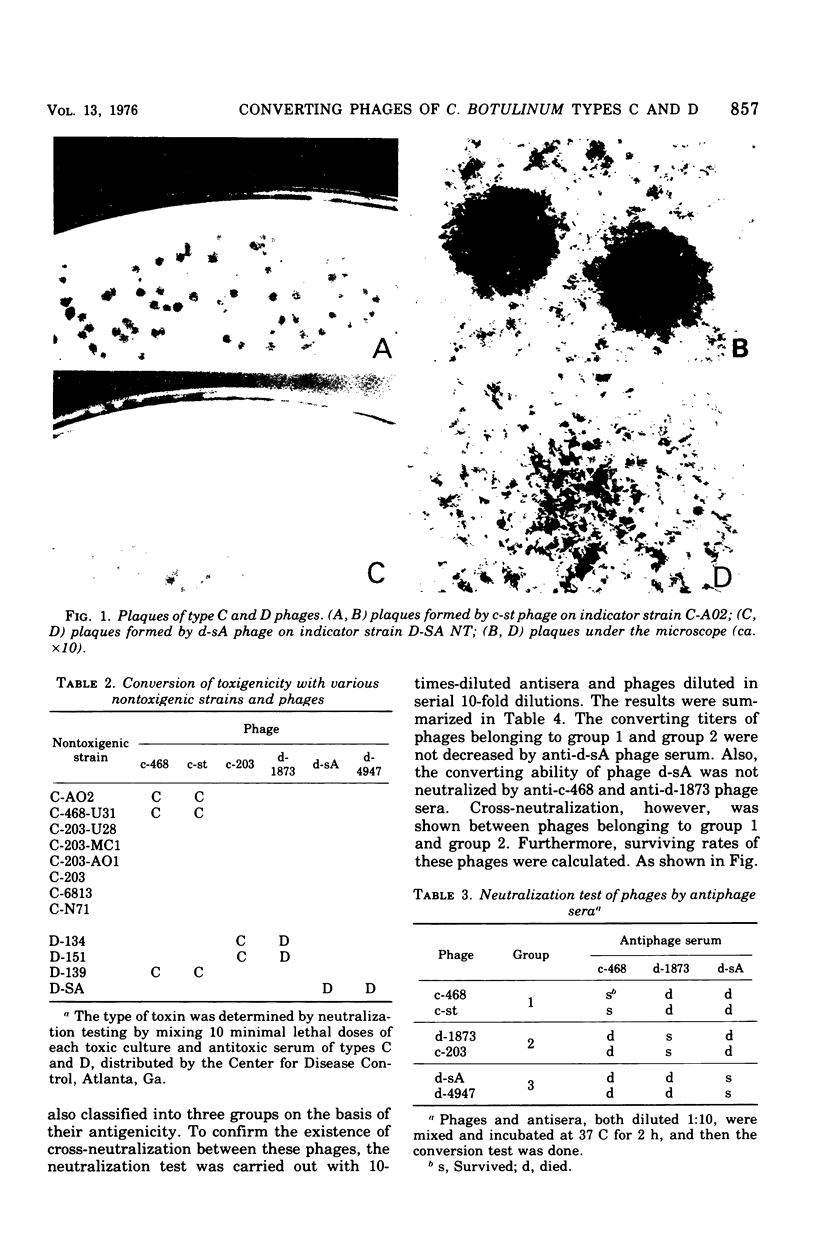
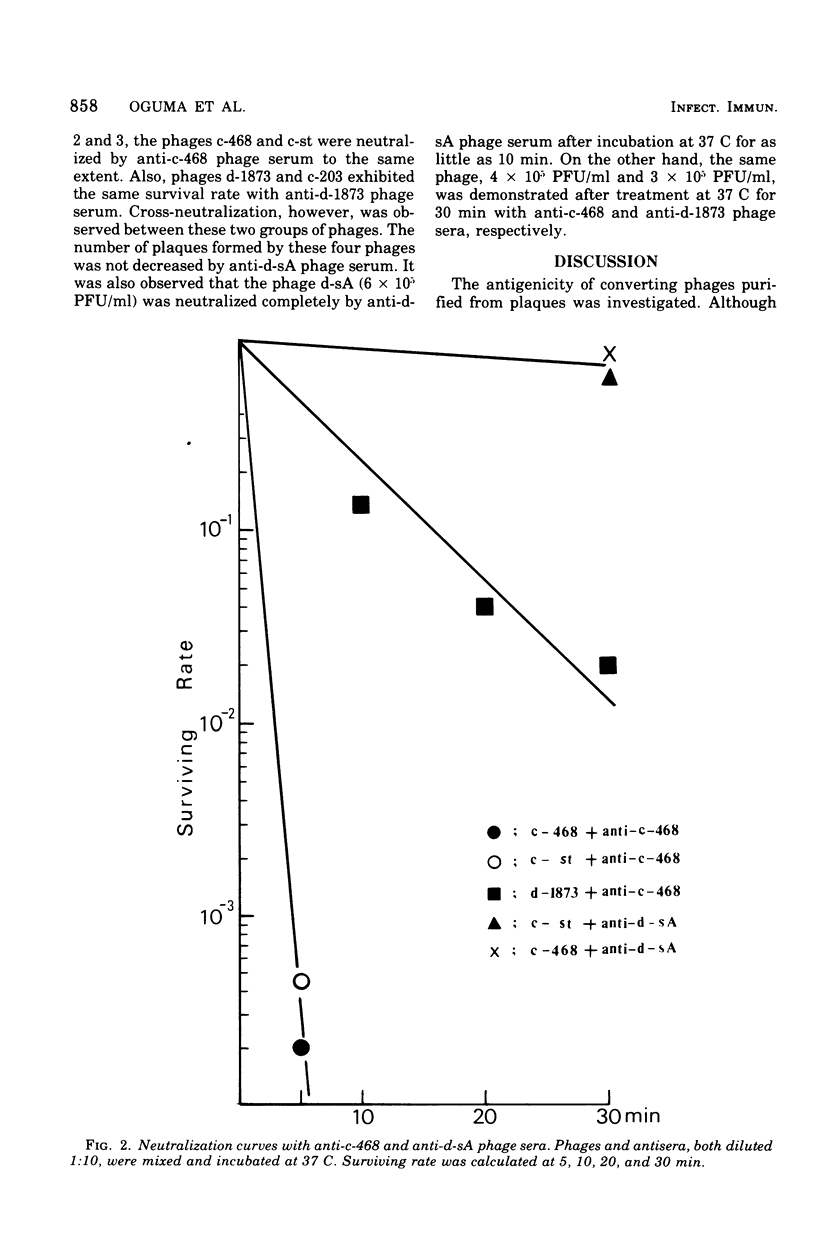
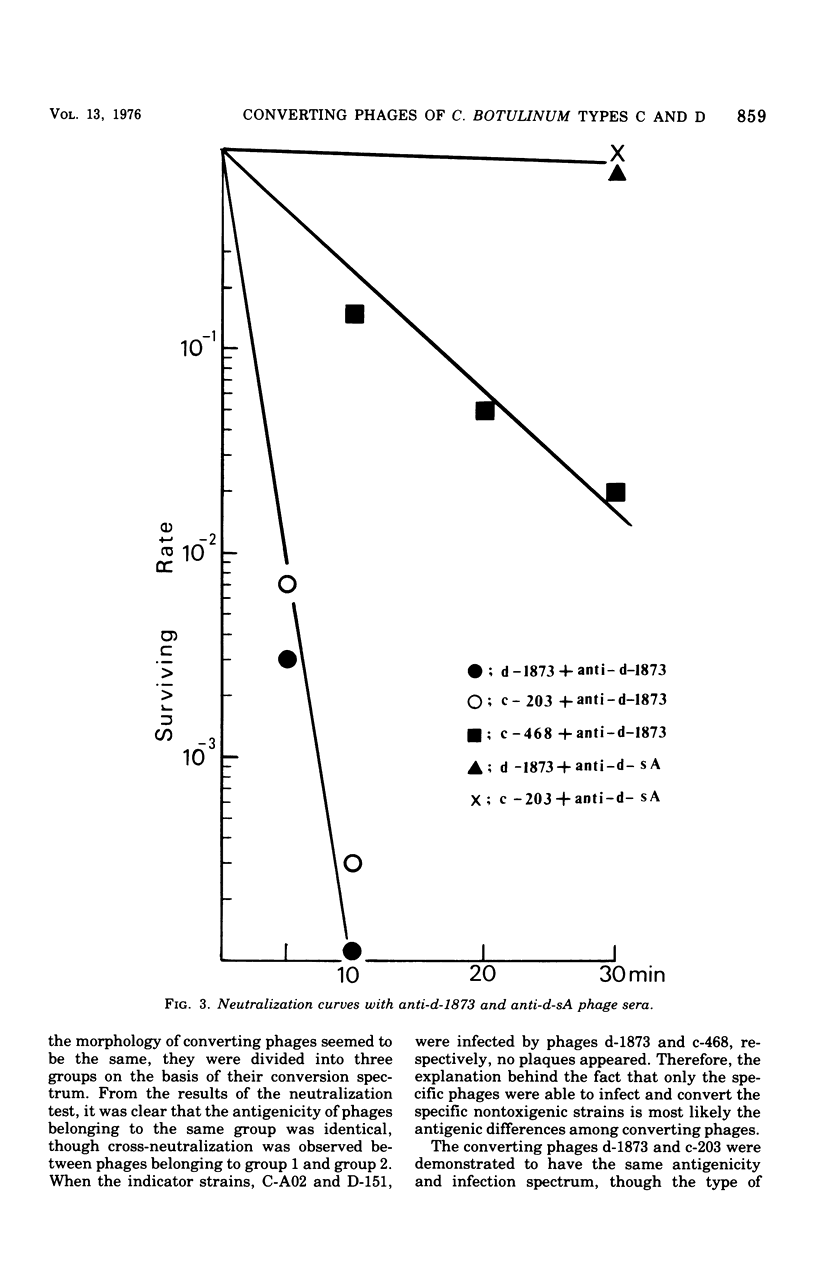
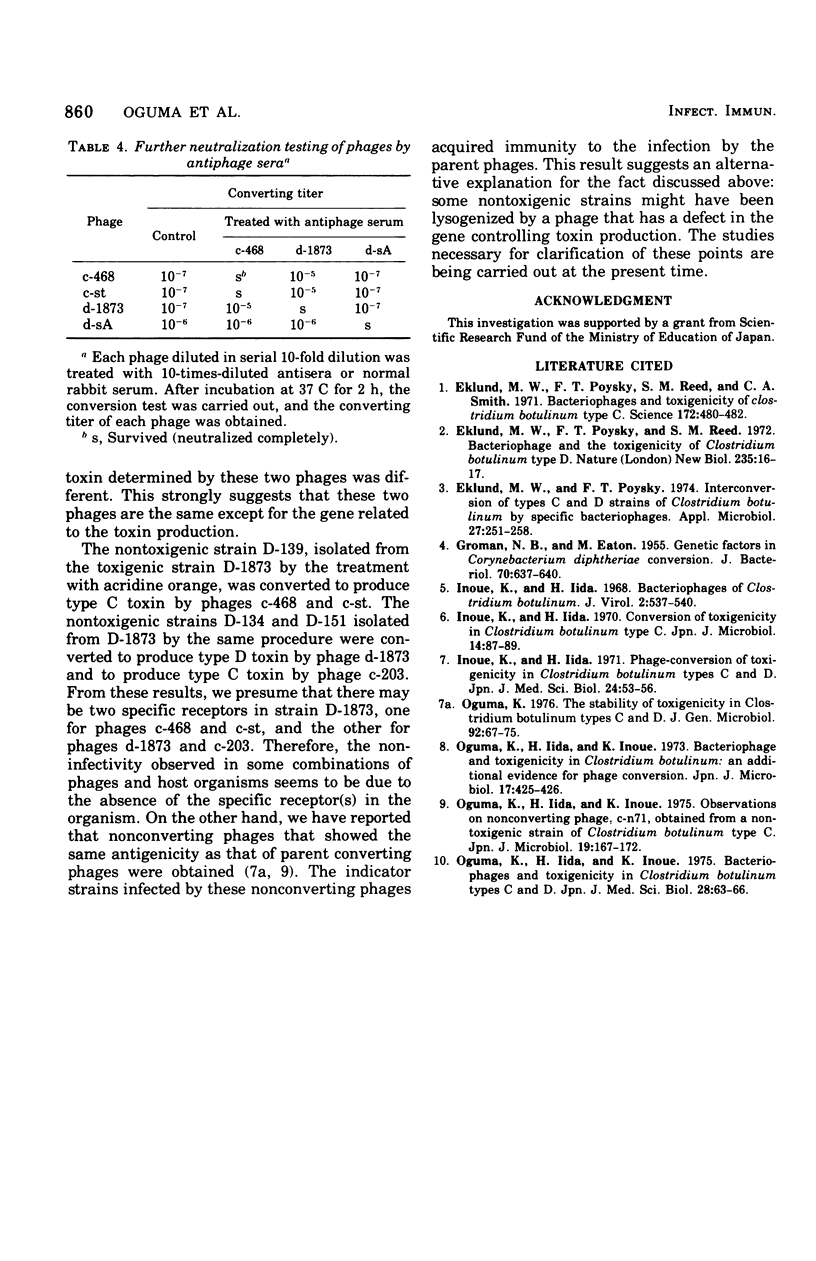
Images in this article
Selected References
These references are in PubMed. This may not be the complete list of references from this article.
- Eklund M. W., Poysky F. T. Interconversion of type C and D strains of Clostridium botulinum by specific bacteriophages. Appl Microbiol. 1974 Jan;27(1):251–258. doi: 10.1128/am.27.1.251-258.1974. [DOI] [PMC free article] [PubMed] [Google Scholar]
- Eklund M. W., Poysky F. T., Reed S. M. Bacteriophage and the toxigenicity of Clostridium botulinum type D. Nat New Biol. 1972 Jan 5;235(53):16–17. doi: 10.1038/newbio235016a0. [DOI] [PubMed] [Google Scholar]
- Eklund M. W., Poysky F. T., Reed S. M., Smith C. A. Bacteriophage and the toxigenicity of Clostridium botulinum type C. Science. 1971 Apr 30;172(3982):480–482. doi: 10.1126/science.172.3982.480. [DOI] [PubMed] [Google Scholar]
- GROMAN N. B., EATON M. Genetic factors in Corynebacterium diphtheriae conversion. J Bacteriol. 1955 Dec;70(6):637–640. doi: 10.1128/jb.70.6.637-640.1955. [DOI] [PMC free article] [PubMed] [Google Scholar]
- Inoue K., Iida H. Bacteriophages of Clostridium botulinum. J Virol. 1968 May;2(5):537–540. doi: 10.1128/jvi.2.5.537-540.1968. [DOI] [PMC free article] [PubMed] [Google Scholar]
- Inoue K., Iida H. Conversion of toxigenicity in Clostridium botulinum type C. Jpn J Microbiol. 1970 Jan;14(1):87–89. doi: 10.1111/j.1348-0421.1970.tb00495.x. [DOI] [PubMed] [Google Scholar]
- Inoue K., Iida H. Phage-conversion of toxigenicity in Clostridium botulinum types C and D. Jpn J Med Sci Biol. 1971 Feb;24(1):53–56. [PubMed] [Google Scholar]
- Oguma K., Iida H., Inoue K. Bacteriophage and toxigenicity in Clostridium botulinum: an additional evidence for phage conversion. Jpn J Microbiol. 1973 Sep;17(5):425–426. doi: 10.1111/j.1348-0421.1973.tb00794.x. [DOI] [PubMed] [Google Scholar]
- Oguma K., Iida H., Inoue K. Observations on nonconverting phage, c-n71, obtained from a nontoxigenic strain of Clostridium botulinum type C. Jpn J Microbiol. 1975 Jun;19(3):167–172. doi: 10.1111/j.1348-0421.1975.tb00864.x. [DOI] [PubMed] [Google Scholar]
- Oguma K., Iida H., Inoue K. Proceedings: Bacteriophages and toxigenicity in Clostridium botulinum types C and D. Jpn J Med Sci Biol. 1975 Feb;28(1):63–66. [PubMed] [Google Scholar]
- Oguma K. The stability of toxigenicity in Clostridium botulinum types C and D. J Gen Microbiol. 1976 Jan;92(1):67–75. doi: 10.1099/00221287-92-1-67. [DOI] [PubMed] [Google Scholar]



